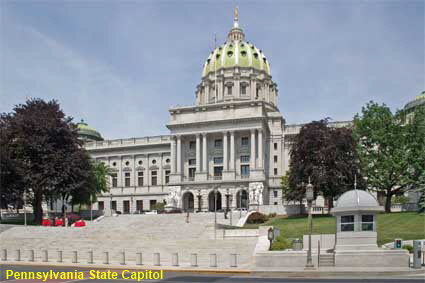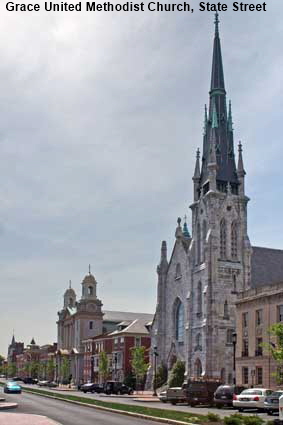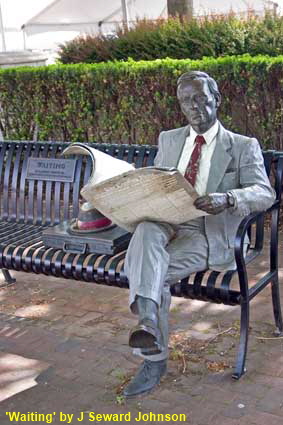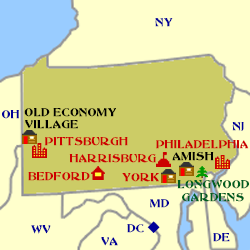Harrisburg
The derivation of place names in the USA is usually fairly clear, so it should be of no surprise that the first settler here was an English trader called John Harris who arrived in 1719. In 1733 Harris was granted 325 hectares (800 acres) of land but it was not until 1785 that his son (also John Harris) produced the plans for a town that he named Harrisburg after his father. In 1812 it became the capital of Pennsylvania. Its early economy was based mainly on farming, but during the 19th century Harrisburg became a major centre for the production of steel. In the civil war the city was crucial to the Union side both as a transport hub and a troop training centre. The Confederates tried twice to take it, but were unable to do so. During the 20th century the steel industry went into decline, but modern Harrisburg still has a population of nearly 50,000.
Grace United Methodist Church, State Street
From the State Capitol, State Street runs down to to the Susquehanna River. This wide road is home to the two churches shown in this picture, Grace United Methodist Church on the right and in background, St Patrick's Cathedral. The Grace Church dates back to 1820 and the current gothic revival style church was constructed in 1880. It was used as a temporary State Capitol after the 1897 fire. The construction of roads, canals and railroads brought many Irish immigrants to the area so in 1826 work began on a Catholic Church. The construction of a cathedral to replace the church was first proposed in 1902, and St Patrick’s Cathedral opened in 1907.
'Waiting' by J Seward Johnson
John Seward Johnson II was born in 1930 and started his career in art as a painter. In 1968 he switched his focus to sculpture, specialising in life-sized cast bronze figures. He has produced several sculptures called ‘Waiting’, depicting a businessman sat on a bench with his briefcase, hat and newspaper. This one is in North Front Street, Harrisburg but other versions of it can be found as far away as Sydney in Australia.
Pennsylvania State Capitol
The original state capitol burned down on February 12, 1897. Plans were immediately put in hand to replace it and current Capitol opened in 1906. This Italian Renaissance building has more than 600 rooms featuring bronze doors, murals and stained glass windows. The dome is 83 metres (272 feet) high. The Capitol cost far more than estimated and in 1908 five people, including the architect and the chief contractor, were jailed for corruption.
Click on Minimap to navigate
Home > US States > Midatlantic USA > Pennsylvania >
DLU080508





To move forwards or backwards through the Pennsylvania trail click the arrows above, or select your next destination on the Minimap.


© Mike Elsden 1981 - 2025
The contents of this page may not be reproduced in full or in part without permission